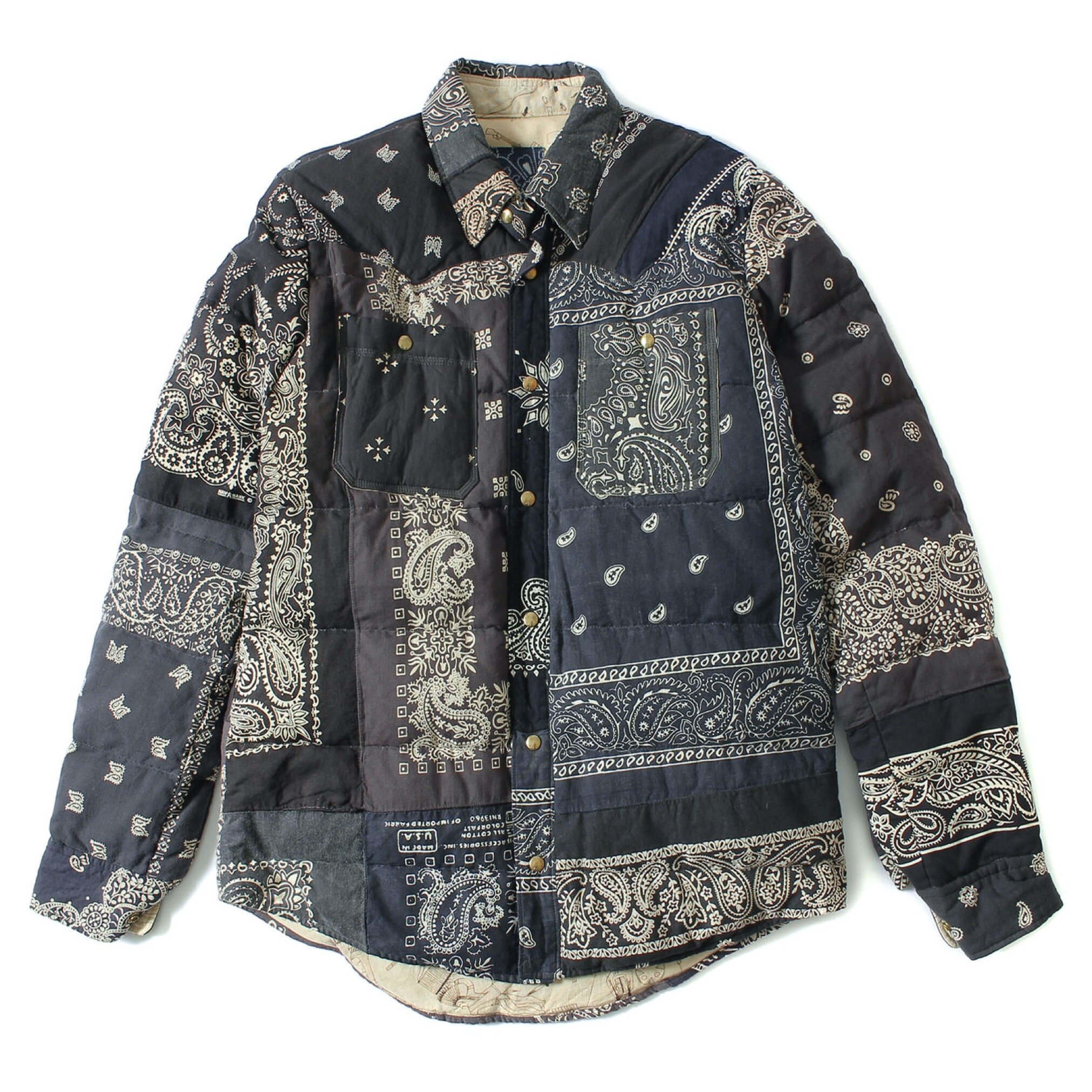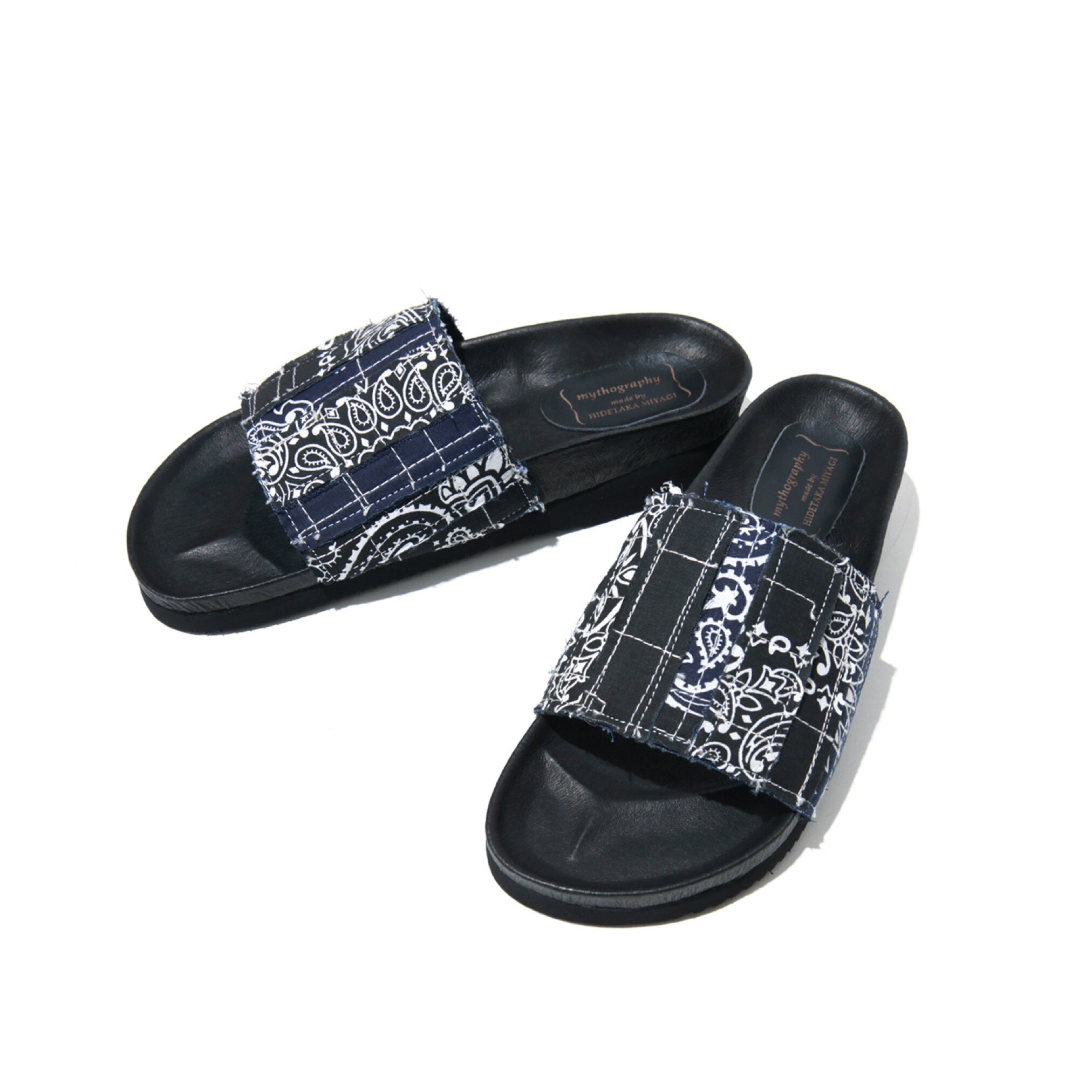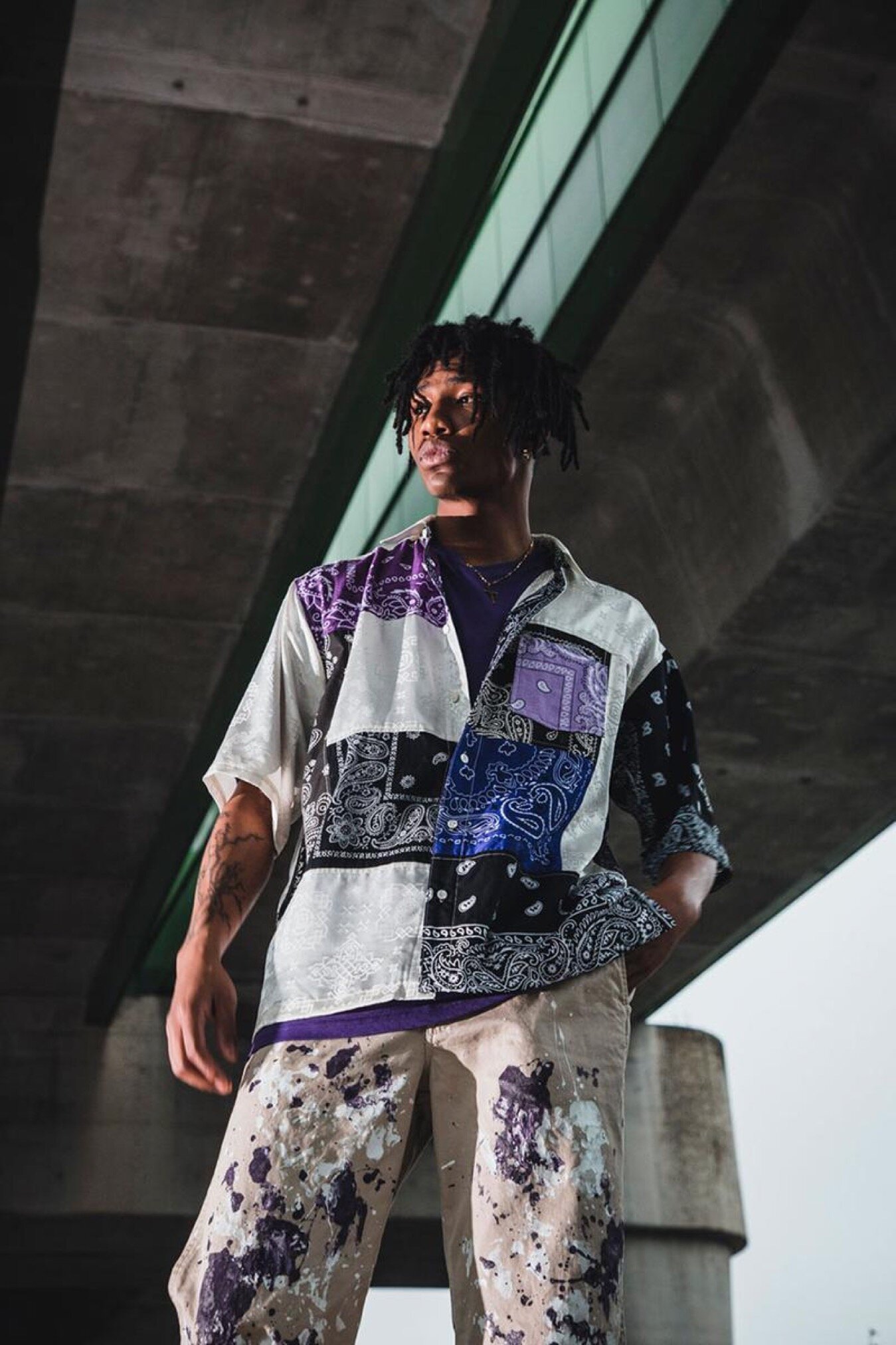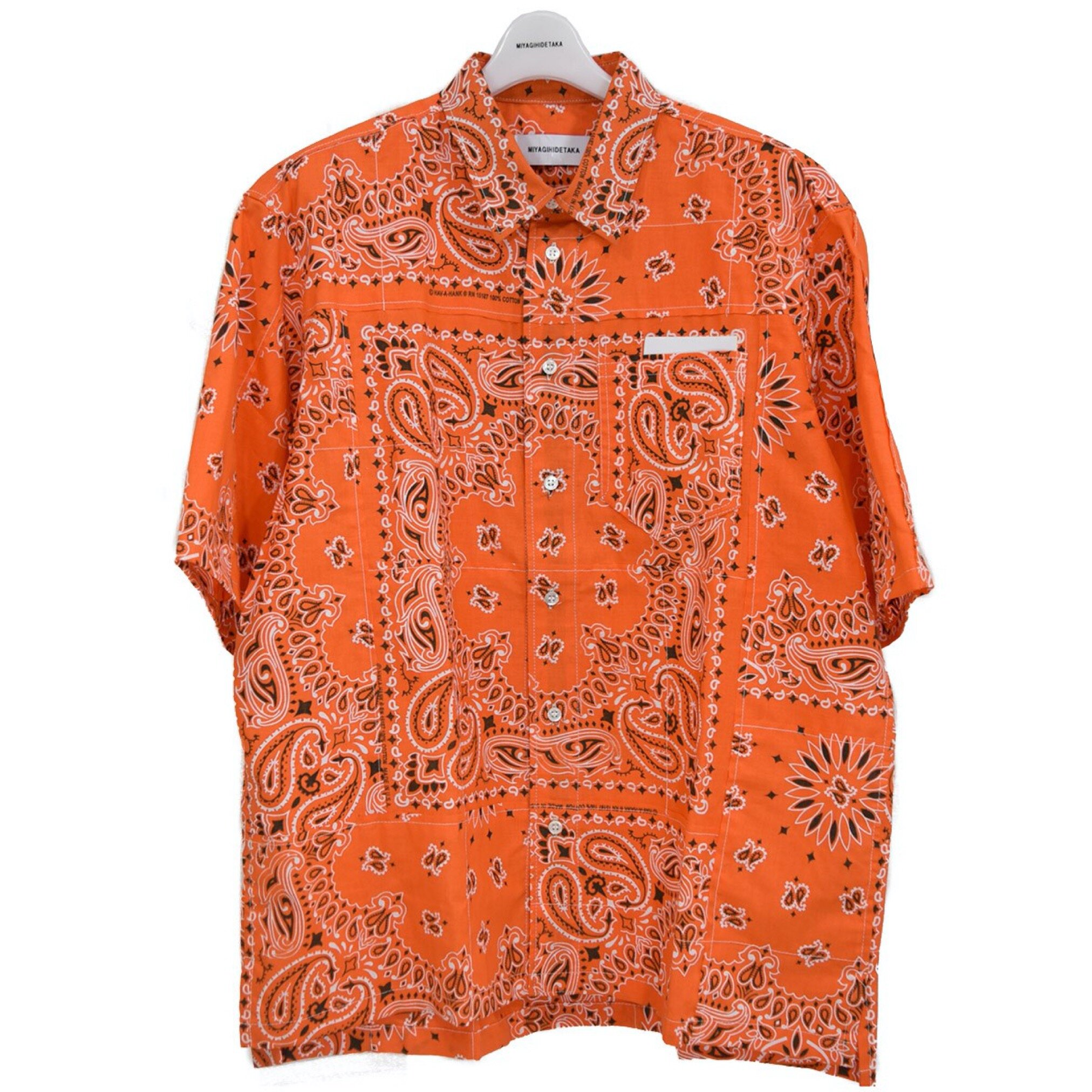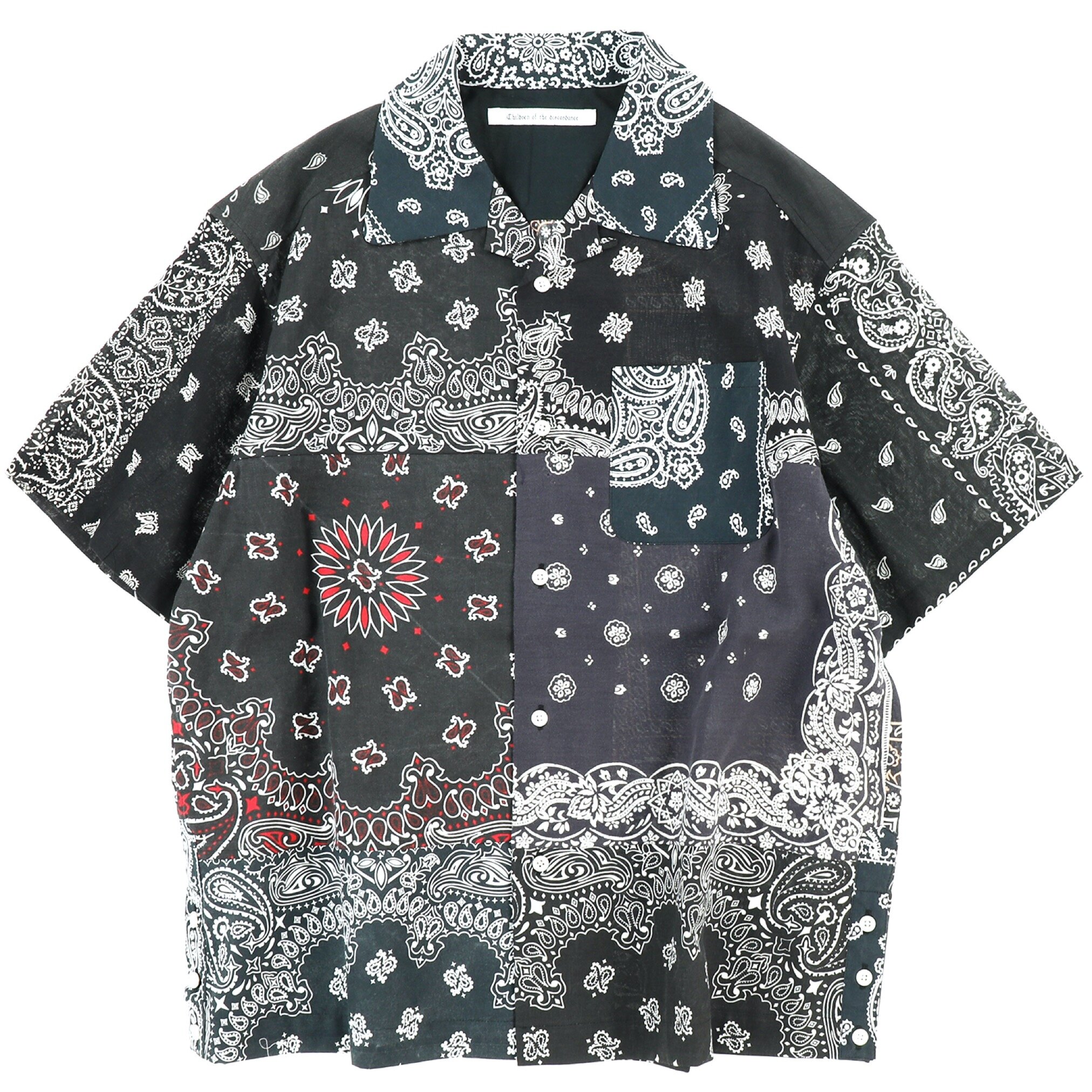Bandanna Craftsmanship: An introduction to Japanese Bandanna Patchwork

A kerchief or mostly known by the word Bandanna is a 20 by 20-inch triangular tied piece, familiar to modernized subcultures.
Rooted in historical paisley – the curved feather figures and patterns are ancient Indian pinecone designs. Even though, renowned bandanna prints are known from Scotland, it was originally from Kashmir (a Persian Empire). With their repeated palm leaf patterns - ‘boteh’ received wide recognition in India. In which later, many became traditionally accented with Indian styles, known as ‘buta'- which was how it all begins to be popularized.
The 18th century marks the popularity journey of Bandanna. Woven cashmere with buta prints quickly attracted the European eyes, as it symbolizes great status. The European paisley production increased, particularly with the red-dyeing process- cotton-printing by the Scottish made it a mainstream production.
Fast-forward to 2017, the bandanna is, perhaps, the most versatile piece of cloth to be currently back. Besides getting its popularity during the American Revolution, Bandanna has been an ancient cloth popular for its protective and decorative functions.
By 1900s, the authentic American staple bandannas with elephant stamp was founded by Davis and Catterall in New York – widely known as the original piece of American bandanna culture. The Elephant Brand defines the iconic bandanna we recognized today as a bandanna simplifying the coordination of red-black with white designs bandanna into fast color cylinder discharged printed white and red/blue bandanna designs. Thanks to this innovation, the bandanna designs undergo important changes that is much cheaper and more accessible to people. This helped bring the casual handkerchief into casual fashion from workers to hippies up to today. The Elephant Brand Bandanna is, basically, the one design that has been copied again and again to be reused in today’s iconic bandanna designs from most brands. The story continues with the fact that a lot of companies borrow designs from original designs of The Elephant Brand casually without giving credits.
From a nose wiping-cloth to an over $2000 Visvim Kerchief Down Jacket, we're extracting the Japanese Patchwork Bandanna Craftsmanship.
Kiro Hirata (Kapital), Hiroki Nakamura (Visvim), Miyagi Hidetaka (MIYAGIHIDETAKA), and Hideaki Shikama (Children of the Discordance) resemble bandanna pieces with Americana, especially US-inspired vintage workwear. Japanese love transforming American style into world-renowned style, don’t they?
Reworked with Japanese craftsmanship, these labels successfully inspire Japanese Patchwork Bandannas, pushing different ideologies of tied bandannas to be a ready-to-wear cultural signifier.
Kapital
Denim capital of Japan, the city of Kojima is where Kapital's Kiro Hirata pursue his father's (Toshikiyo Hirata) heritage into the Japanese label. Mastering the artwork of Boro (Japanese patchwork) and Sashiko (Traditional Japanese Stitching) became Kapital's intent for the fashion industry.
Aside from creating a vintage-look fashion label, Kiro shares his passion for American bandannas. Kiro's love and passion for bandannas brought him to open The Elephant Brand bandanna Museum, back in 2015. With the help of Jonathan Lukacek (The Bandanna Almanac), an Osaka-based fashion designer, fashion archivist, and the owner of The Two Ears Brand, Kiro displays huge exhibitions of vintage Elephant brand bandannas.
Years of bandanna obsession brought Kiro the thought of remaking bandannas into patchworks. Which is in parallel with the influences of Kapital's workwear and bohemian-style clothing, bandannas have become a hallmark for its seasonal apparel.
One of its signature bandanna clothing was this Patchwork Bandanna-Print Cotton Trucker Jacket – a combination of bandannas with Kapital's Boro patchwork techniques tied into vibrant hues of colors (purple, green, yellow, white, and black), expressing the asymmetrical paisley patterns as one of its features.
Visvim
Similar to Kapital, Visvim's iconic clothing championed the unity concept of American rough-hewn textiles with Japanese traditional blends. Hiroki Nakamura fostered his interest in time-spending American cult clothing style from growing up in the midst of Tokyo post-war scenery. His obsession began with his love of work boots and moccasins which later developed him into making Visvim more than just a shoe label. Applying collected technological knowledge from his previous experience at Burton, the snowboarding apparel company, Visvim shifted its label into menswear and footwear hardly influenced by military garb. Hiroki dubbed that Visvim creates 'future vintage' and fortunately, his dubbed was right.
Following Visvim's iconic monochromatic patchwork, Hiroki Nakamura inherited the native American motifs of bandannas into line-ups of Visvim’s menswear– most of them are vibrant hues intricate patchwork kerchief Jackets. The kerchief jacket resembles Visvim's next level of craftsmanship with its attention to details in a single patchwork creation. Reassuring its timeless quality and (of course) a collector's dream.
MIYAGIHIDETAKA
Only through his perception release on the clothes he wanted to wear or make irregularly, Miyagi Hidetaka – the creator – spread his popularity through quality-over-everything bandanna patchwork designs. Born to have his unique personality in ethos and design, he has the living motto of doing what he wants, with whom (he wants to), and whenever he wants (seasonal clothes is not a vocabulary in his mind).
The innovative creation of the footwear brand Mythography back in 2012, was Hidetaka’s starting point in his craftsmanship journey. Embracing the concept of shoes as a common-daily wear, Mythography footwear is a reflection of Hidetaka’s values in approaching repurpose vintage materials and silhouettes. By constantly reinventing and repurposing vintage materials, it helps Hidetaka as a designer to unravel, feel and focus his passion as a craftsman. By 2016, the first bandanna-printed fabric was designed as Hidetaka’s Mythography sandals and shoes. In the later year, through his growing exploration of dyes, fabrics, and bandanna prints, his namesake brand, MIYAGIHIDETAKA, was created based on the underlying extension of his passion and uniqueness.
Fusing his creativity in unique (or distinguished) bandanna patchworks with high-quality construction formed clothes, the MIYAGIHIDETAKA's iconic bandanna short sleeve shirt is available in numerous coloring options. This shows a maintained balance of bandanna prints being different from one another, endless and a timeless option for every Japanese bandanna freak.
Children of the Discordance
Established in 2011, Children of the Discordance gained inspiration from fashion and music recollections of the 90s era. The brand's creator and exclusive designer, Hideaki Shikama, became the brand’s natural inspiration of updating and recycling vintage textiles. Hideaki sees bandanna print as something that has a huge role in his life - for him, bandanna prints are bigger than most people's perspectives. At a young age of 11 years old, he affiliated bandanna with western skating culture and music, explicitly the US. The influence of vintage bandanna prints in Japanese culture is big. Many affiliates it with the gangster culture, while some as an authentic handcraft featured in the fashion world. Named as one of Japan’s biggest bandanna collectors, he embraces concepts to craftsmen, creators, and producers of his production, bringing the brand to what it is today.
The cult brand of Hideaki has become another option of bandanna patchwork. Offered in the pleasing reworked design, and multicolored bandanna patchworks over styles of clothing, Children of the Discordance's bold silhouettes is an interesting piece of vintage-look clothing.
Bandanna's survival capabilities to diversify in different regions up until today hasn’t shown any sign of fading in existence. The colossal impact in the fashion industry has been recognized globally – both as a functional close-at-hand accessory and repurpose material. Acknowledged by many, the Japanese craftsmanship of bandanna patchworks is a future classic and a timeless cultural fashion piece, regardless of the brand. It's massive to say that a square piece of cloth could preserve its versatility in many cultures through a long history.
About the author:
Based in Japan, Adian is a '98 born Indonesian who is passionate about photography and anything related to fashion. With a particular interest in taking photos, colors inspired him to capture memories of people, cultures, and places.
Edit: Ali George Hinkins











